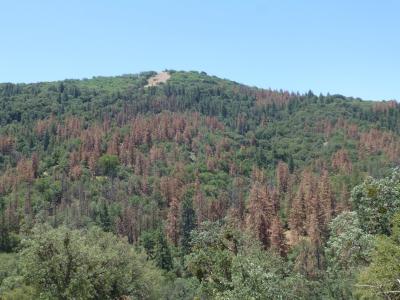Understanding How Algorithms for Simulating Water Transport in Plants Affect Vegetation Modeling
How water moves in plants play a central role in driving water, energy, and carbon cycles, as well as plant adaptation to climate change. Numerous efforts to couple plant hydrodynamic models with vegetation dynamics models have begun. Different numerical approximations of the model’s governing equations exist, but their numerical accuracy and effects on the simulated vegetation function and dynamics have rarely been evaluated. This study evaluated the impacts of the numerical approximations in modeling plant hydrodynamics on vegetation aboveground biomass (AGB). Coarser resolution near the ground surface produced opposite AGB biases in temperate versus northern, or boreal, forests.
This study showed that coarsening near-surface vertical grid spacing (grid size >10 cm) leads to significant overestimations of AGB in most temperate forest regions and underestimations of AGB in boreal forest regions. Models should not use coarse near-surface vertical grid resolution for areas with large and prolonged water content differences among soil layers at depths due to a long dry-season and/or well-drained soil, or when soil evaporation is the dominant form of evapotranspiration. Similarly, coarse surface grid resolution should not be used when there are significant changes in soil particle size distribution along the soil depth. These findings can help scientists design model configurations to improve coupled hydrology-vegetation system simulations.
Accounting for water movement in the soil and water transport within plants is important for representing plant growth in Earth system models. Researchers implemented different numerical approaches for a plant hydrodynamic model within a vegetation dynamics model, the Functionally Assembled Terrestrial Ecosystem Simulator (FATES-Hydro), coupled to the Energy Exascale Earth System Model Land Model. They compared how the various numerical approaches affected the simulated AGB at both single points and globally. The team found that care should be taken when determining the number of soil layers to use in numerical simulations as it can significantly affect AGB depending on the required accuracy and computational costs.

